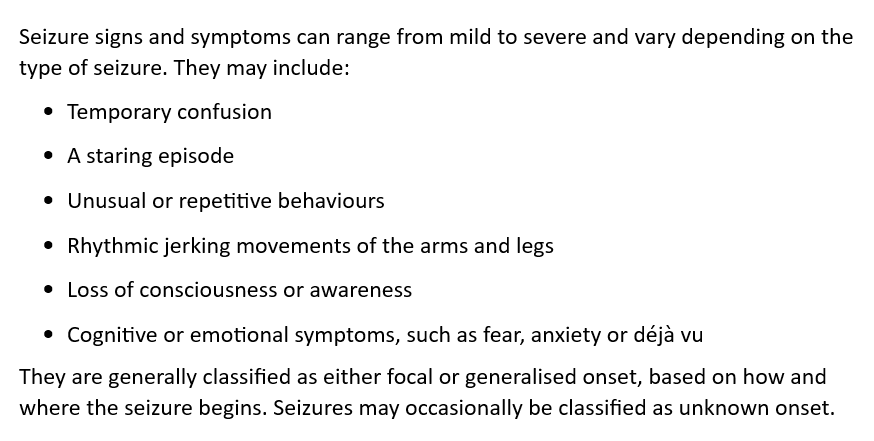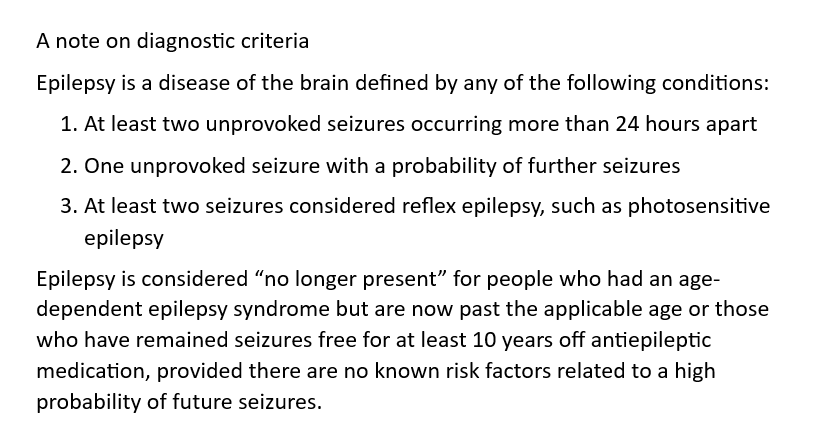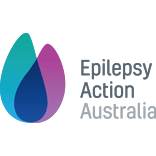Pregnancy raises special issues for women with epilepsy. While most women with epilepsy deliver healthy babies, it is important to have an awareness of any possible risks so you and your doctor can work together to manage and minimise those risks.
Planning ahead
For women with epilepsy it is especially important to pre-plan pregnancy to ensure the best outcome for you and your baby. There are many things you can do to plan for a healthy pregnancy such as:
- Discuss any necessary changes with your neurologist;
- Seeking an obstetrician you would like to see;
- Making healthy lifestyle choices and understand any lifestyle risk factors that need to be addressed such as diet, drugs, alcohol or cigarettes and travel to areas with known diseases that may increase pregnancy risks;
- Increasing your intake of folate rich foods and taking a recommended supplement at least 3 months pre-pregnancy and for the first trimester of pregnancy.
Your neurologist will discuss your treatment plan and ideally aim to use one medication at the lowest possible dose to achieve the best seizure control for you, and with the most favourable profile for women during pregnancy and breastfeeding.
The neurologist may also discuss generic counselling if there is a strong history of epilepsy, other health conditions or major congential malformations through your family.
What if I have an unplanned pregnancy?
Women of childbearing age are always in a position of potential pregnancy if they are in a sexual relationship. It may help to bring up the possibility with your treating doctor. A simple question to ask may be as follows:
"Doctor, if I were to become pregnant, what changes in my medication would be necessary?"
This may make your doctor think about changes in your current medication, especially if you are taking sodium valproate - or consider explanations about lamotrigine dose adjustments in pregnancy.
The most important advice for any women with epilepsy taking antiseizure medications, who find themselves with an unexpected pregnancy, is to not panic and do not stop taking your medications. Contact your doctor to discuss your options.
Do seizures change during pregnancy?
Many changes that happen during pregnancy can affect medication absorption or clearance from the body, cause sleep disturbances, as well as add new stressors which can change seizure frequency during pregnancy.
- For most pregnant women with epilepsy, seizures remain the same;
- For some, seizures become less frequent;
- Women with catamenial epilepsy may have improved seizure control during pregnancy;
- For others, particularly women whose sleep or medications are affected by the pregnancy may notice an increase in seizures;
- For someone who hasn’t had a seizure for several months before conception, there is less risk of having a seizure during pregnancy.
There are some medications that may deplete during pregnancy. Your doctor may need to monitor and increase these medications regardless of whether seizures are occurring or not.
Women with poorly controlled epilepsy should be aware that an increase in medication dose may be needed during pregnancy.
How can seizures affect pregnancy or the baby?
The type of seizures you usually experience may influence the effect on the baby. Tonic clonic seizures during pregnancy can cause:
- A brief reduction in oxygen supply to the foetus; focal or non-convulsive seizures have no known effect on the foetus;
- A brief slowing of the unborn child’s heart rate;
- Injury to the foetus if the mother has a severe fall or serious injury.
If a seizure happens during pregnancy, report it to your neurologist. They may need to check your medication levels or make adjustments to your medication. Your obstetrician may want to check baby if there are any concerns.
The Australian Pregnancy Register
The Australian Pregnancy Register for Women on Antiseizure Medication (APR) is an ongoing nationwide study enrolling women who are currently pregnant or who have given birth recently (infants up to 12 months of age).
The APR has identified specific antiseizure medications (or combination of) that lead to higher than expected birth defects. They are now seeing a change in prescribing patterns because of their findings.
For more information Register Here and a research nurse from the Australian Pregnancy Register will contact you.

What about medication?
From previous research it is known that women who are taking an antiseizure medication may have a slightly higher risk (4-6%) of having babies with birth defects than the general population (2-3%), which means there is a 94% chance of your baby not having a birth defect.1 This risk varies depending on the medication, number and dose of your medication(s).
Note about sodium valproate2
Babies born from women taking sodium valproate during pregnancy, especially at higher doses, develop a higher rate of birth defects, and a high rate of problems with baby’s development. Epilim is not prescribed for girls or women of childbearing age unless other anti-seizure medications are not effective for their seizures or cause intolerable side effects.
Someone who has been seizure free for over two years, may consider discussing weaning off medication with the neurologist. This will depend on your epilepsy type and the risk of having a seizure without medication.
For most women, it’s best to continue treatment during pregnancy. To reduce the risks for you and your baby, your doctor will prescribe the safest medication and dose that’s effective for your type of seizures. Your blood levels may be monitored throughout your pregnancy.3
A recent review of the antiseizure medication and dangers to the unborn child has advised doctors to:
- Avoid sodium valproate if an equally effective antiseizure medication is available
- Aim to use one medication only (monotherapy)
- Take the lowest effective dose whenever possible, avoid sodium valproate doses of 650 mg or above, daily (if possible)4
- Avoid withdrawal or changes of antiseizure medications if you are already pregnant
What about labour and delivery?
Most pregnant women with epilepsy deliver without complications.
If someone has had frequent seizures during pregnancy, especially during the third trimester, there is an increased risk of having a seizure during delivery. More frequent appointments will be needed with both the obstetrician and neurologist, and the safest delivery method will need to be discussed.
Seizures don’t commonly occur during labour but if a seizure does happen, it may be stopped with intravenous medication.5 If the seizure is lengthy, the obstetrician may choose to deliver the baby by caesarean.
Choice of methods of pain relief during labour and delivery should be no different to other pregnant women.
If the antiseizure medication dose is changed for pregnancy, the dose is most likely to be returned to pre-pregnancy levels shortly after delivery to continue keeping seizures under control and the medication at effective levels.
Is breastfeeding possible?
Women with epilepsy can safely choose to breastfeed and taking antiseizure medications while breastfeeding does not pose significant additional risks.6
Antiseizure medications are excreted in breast milk, but for most, only in low to very low concentrations, so there is no reason why you should not breast feed. Breastfeeding is associated with positive health benefits for baby and mother, but if you experience breast feeding challenges, sleep deprivation and exhaustion it may become problematic.
The neurologist, obstetrician or midwife will explain more detail in relation to breastfeeding and antiseizure medications.
MotherSafe is a good resource for this information http://www.mothersafe.org.au/
Summary
Before trying to conceive, talk to your neurologist, GP and/or an obstetrician. They will want to monitor you closely throughout.
Fortunately, most women with epilepsy give birth to normal, healthy babies. With proper planning and precautions the chances of having a healthy child is 94% or higher. No pregnancy is completely risk free however working closely with your doctor you can help reduce many risks.
References
1 Meador, K. J., & Loring, D. W. (2016). Developmental effects of antiseizure drugs and the need for improved regulations. Neurology, 86(3), 297–306. https://doi.org/10.1212/WNL.0000000000002119
2 Tomson, T., & Battino, D. (2009). Teratogenic effects of antiseizure medications. Neurologic clinics, 27(4), 993–1002. https://doi.org/10.1016/j.ncl.2009.06.006
3 Eadie M. J. (2014). Treating epilepsy in pregnant women. Expert opinion on pharmacotherapy, 15(6), 841–850. https://doi.org/10.1517/14656566.2014.896902
4 Tomson, T., Battino, D., Bonizzoni, E., Craig, J., Lindhout, D., Perucca, E., Sabers, A., Thomas, S. V., Vajda, F., & EURAP Study Group (2018). Comparative risk of major congenital malformations with eight different antiepileptic drugs: a prospective cohort study of the EURAP registry. The Lancet. Neurology, 17(6), 530–538. https://doi.org/10.1016/S1474-4422(18)30107-8
5 Mayo Clinic. (Oct 2020) Epilepsy and pregnancy: What you need to know. Accessed Dec 2020. https://www.mayoclinic.org/healthy-lifestyle/pregnancy-week-by-week/in-depth/pregnancy/art-20048417
6 Veiby, G., Bjørk, M., Engelsen, B. A., & Gilhus, N. E. (2015). Epilepsy and recommendations for breastfeeding. Seizure, 28, 57–65. https://doi.org/10.1016/j.seizure.2015.02.013
Special thanks to Professor Frank Vajda, Associate Professor Piero Perucca, Professor Terry O’Brien, and APR Research Coordinators Alison Hitchcock and Janet Graham for their contribution and advice.






